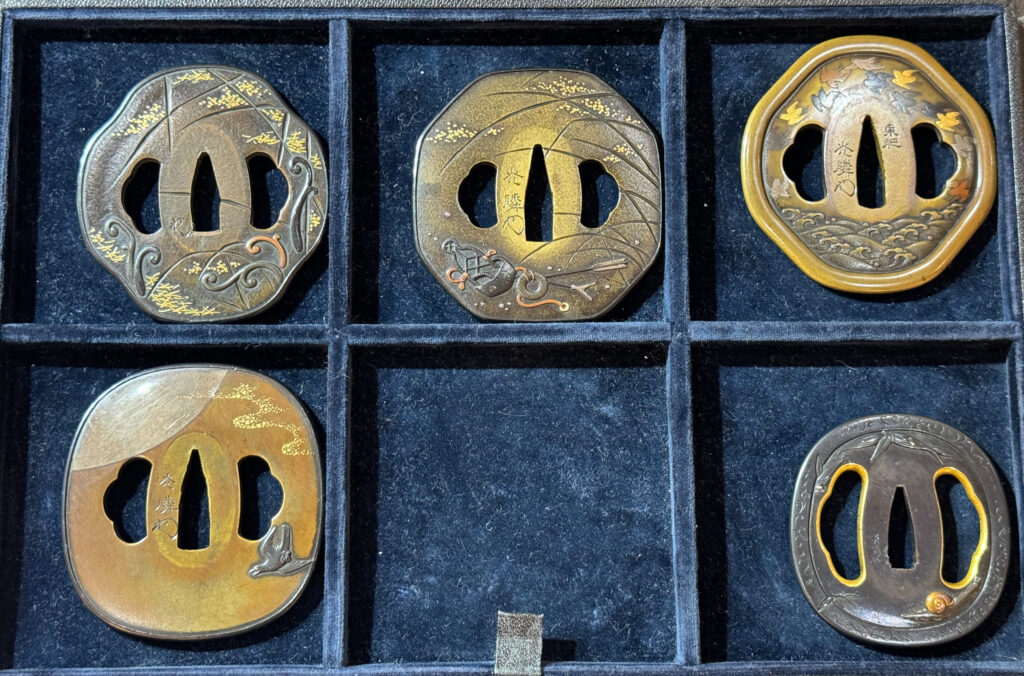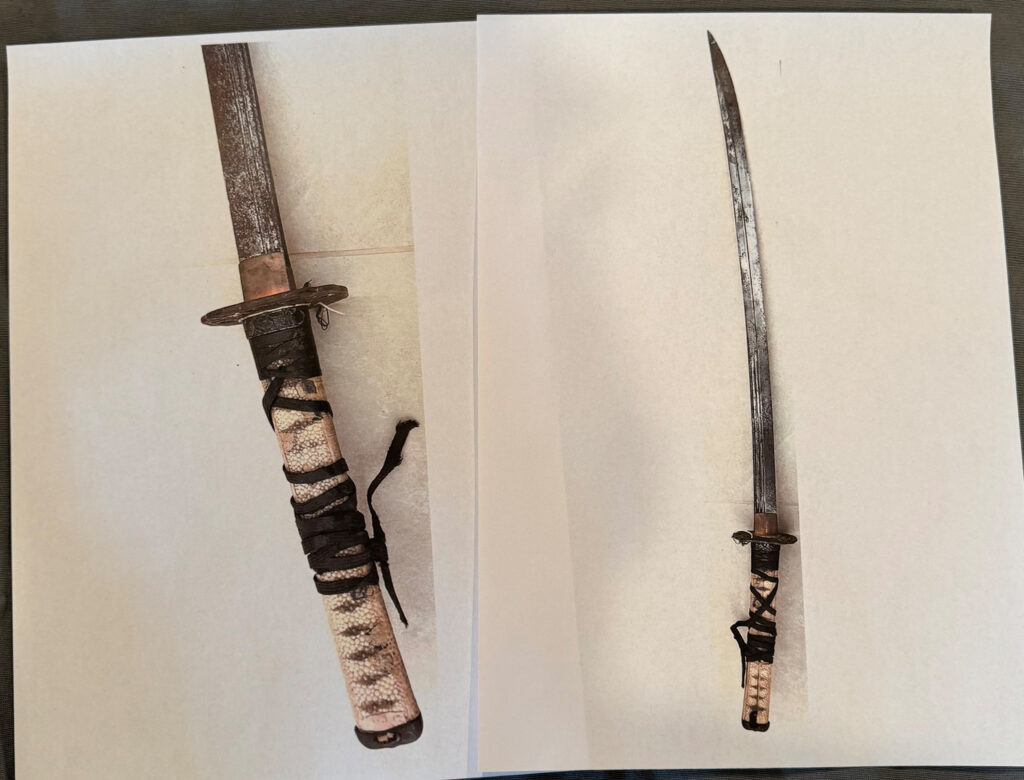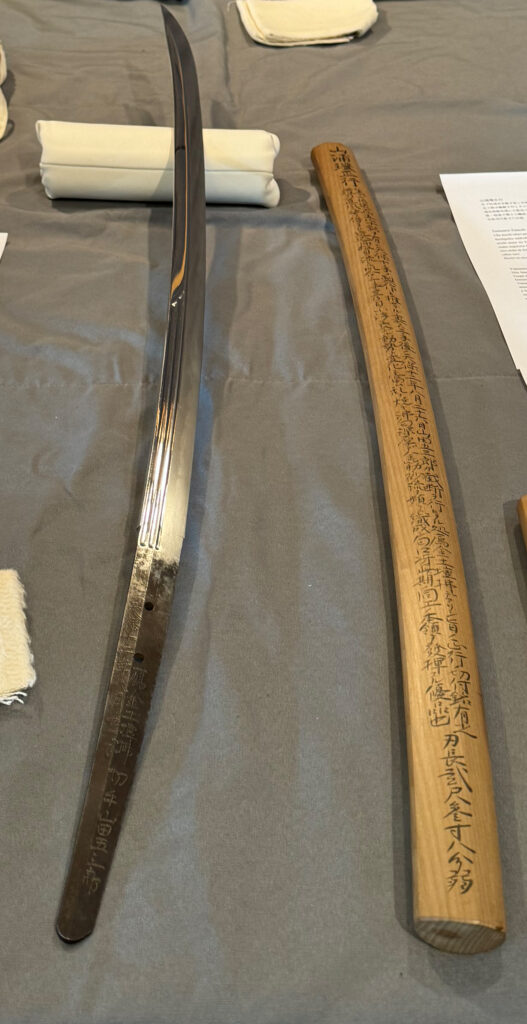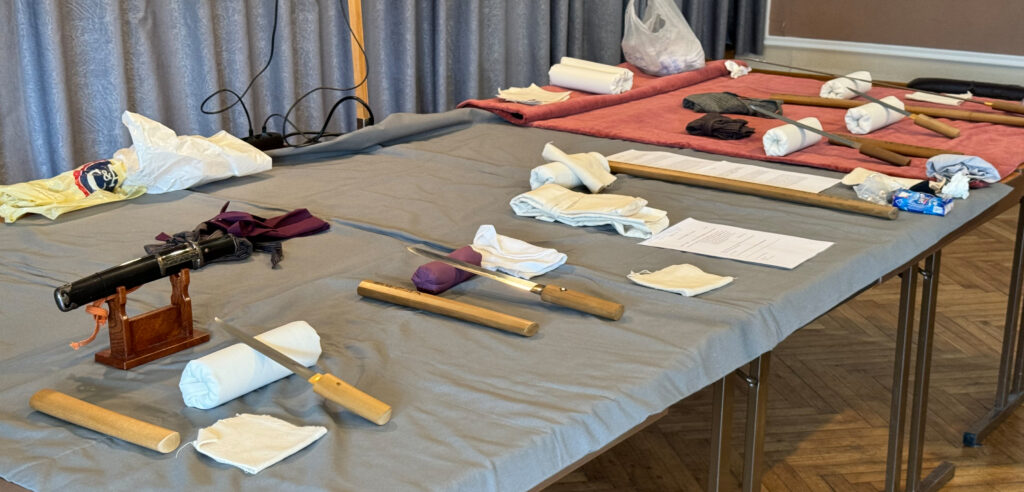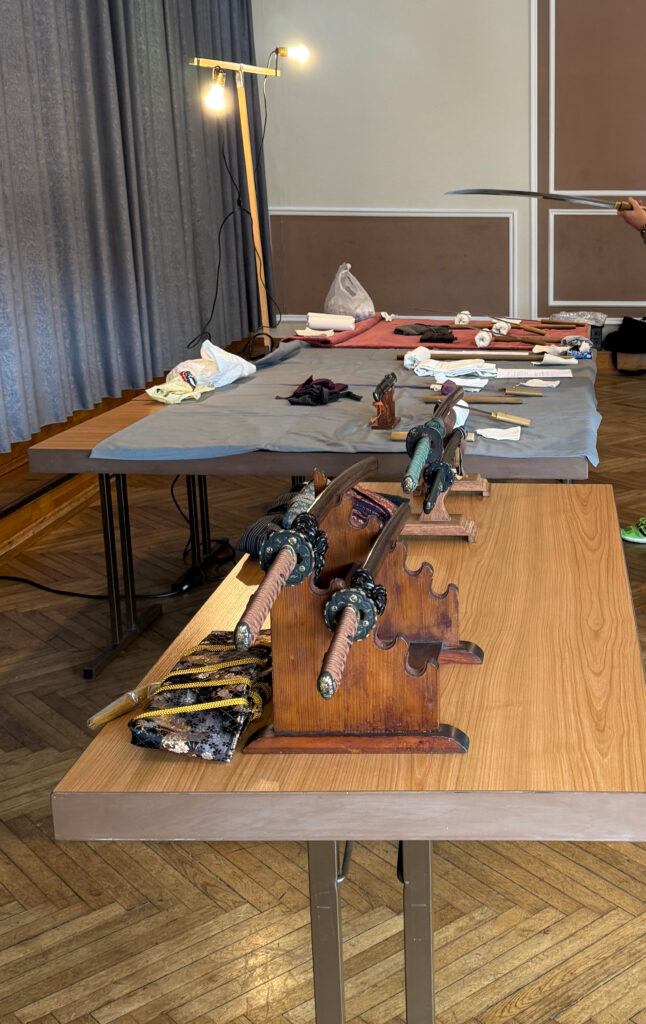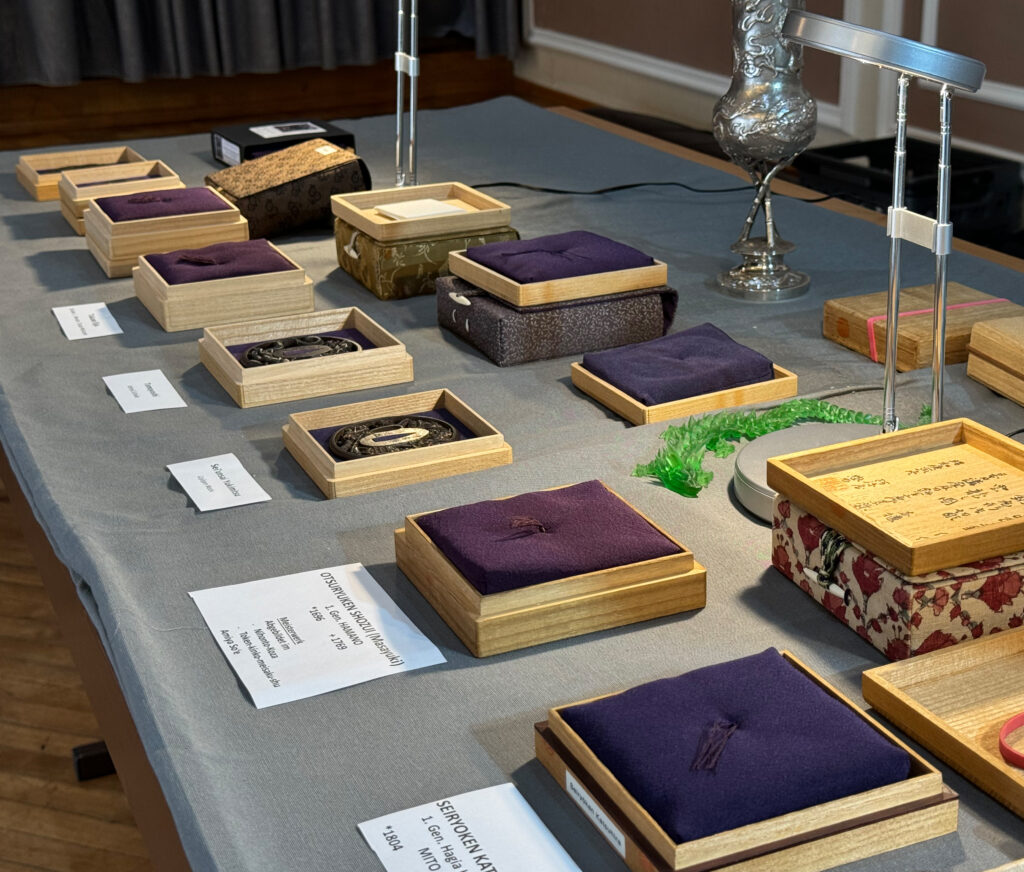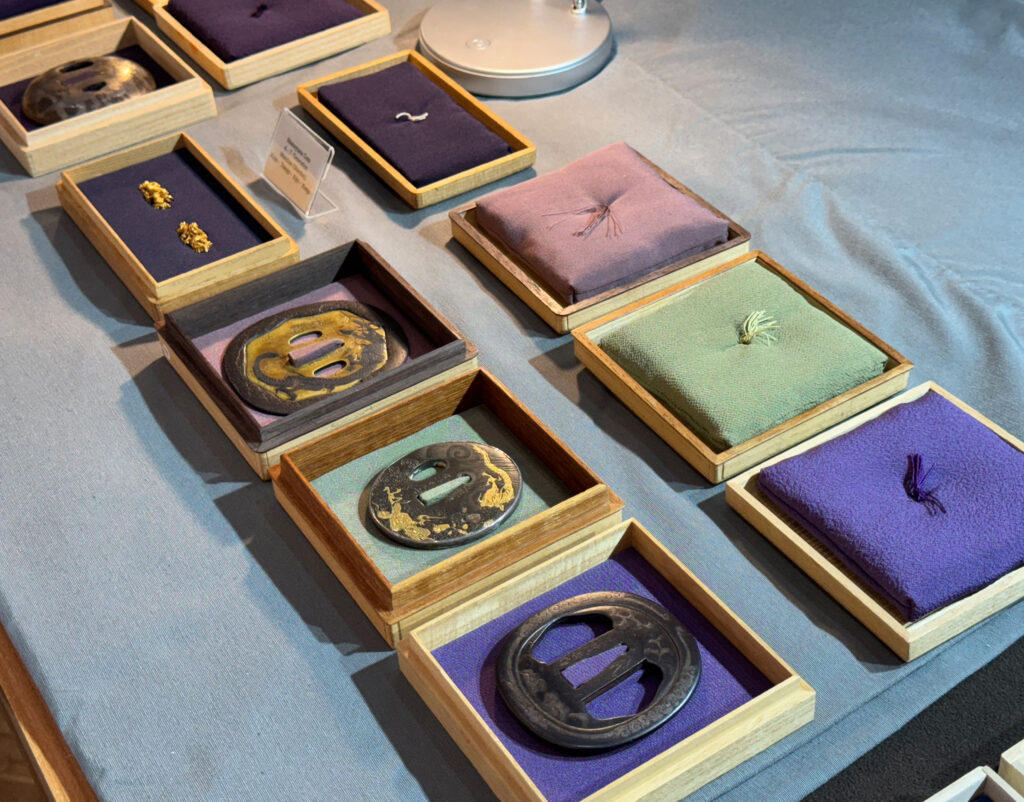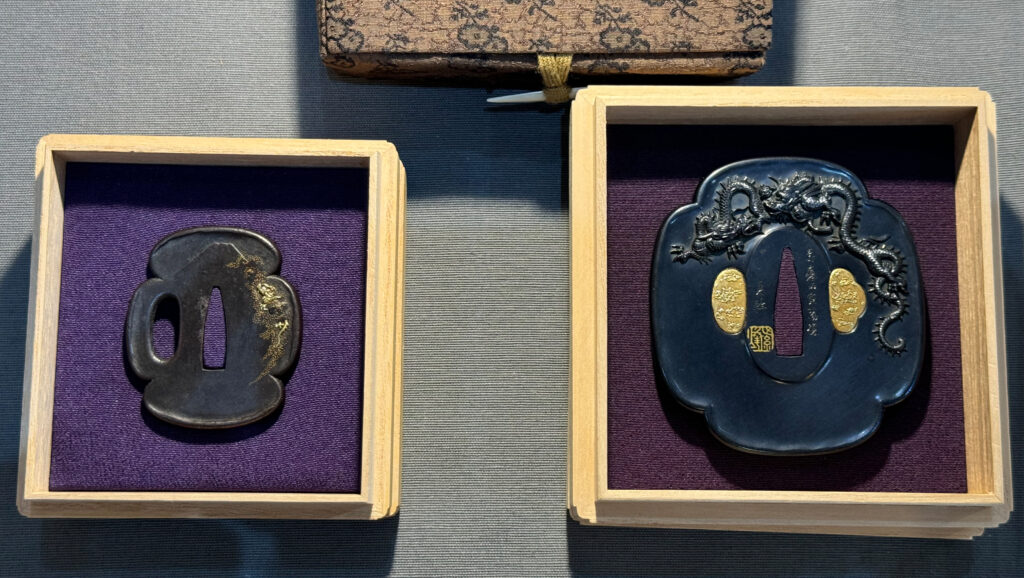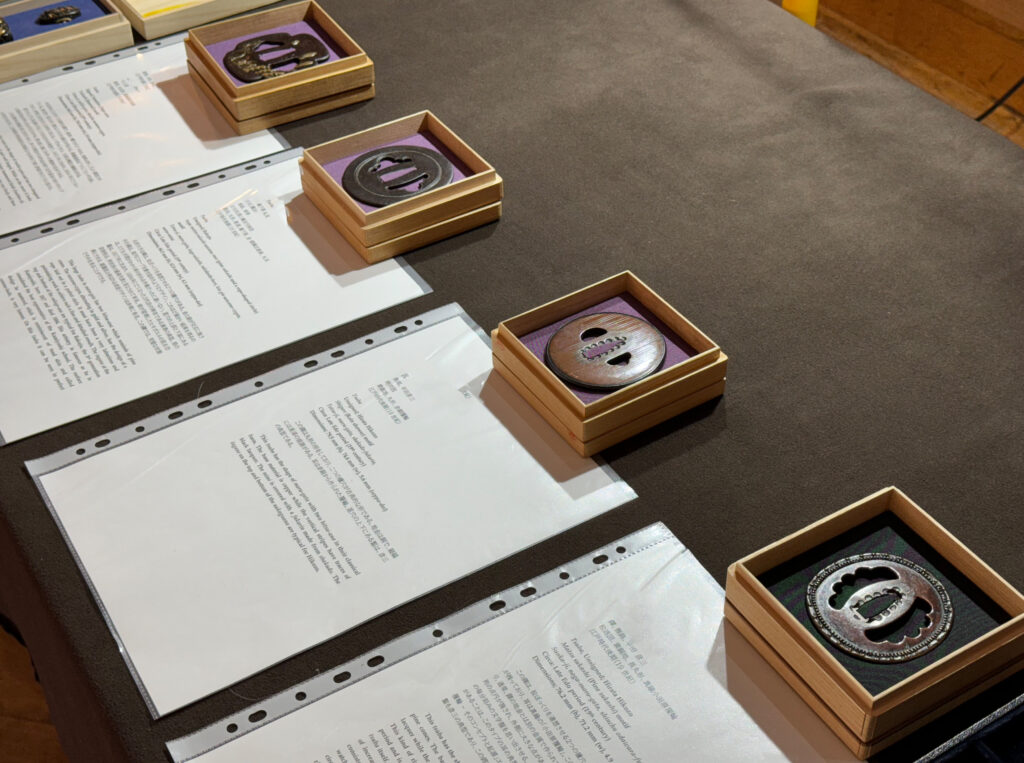Manching, September 28th 2024, NBTHK-EB Meeting
On Saturday, September 28, 2024, the NBTHK European Branch held its November meeting in the small German town of Manching, which is not far from Munich and Nuremberg.
Of course, in addition to the German members, members from Austria, Luxembourg and Switzerland also took advantage of this opportunity and attended the meeting. Since the theme of the meeting was “Kiyomaro”, the members were in for a treat.
In addition to a large katana from Kiyomaro, there were two tanto from Masao and two tanto from Kiyondo.
The katana from Kiyomaro has had quite a journey, as it was found in Austria a few years ago in a devastating condition:
After the tsuka was removed, the signature was quickly verified by knowledgeable members of the NBTHK-EB. Since it appeared to be genuine and not gimei, the sword was sent to Japan for further examination. Now the sword is back in Austria in a fresh polish and with a Tokubetsu Hozon certificate from the NBTHK.
The newly crafted shirasaya bears the following sayagaki by Tanobe Michihiro, the former chief researcher and managing director of the NBTHK:
Yamaura Tamaki Masayuki
Ubu machi-okuri goji-mei o arishi Tenpō jūnen no seisaku to oseraru ura ni wa ninen ato no Tenpō jūinen hachigatsu nijūrokunichi
Yamada Gosaburō ga setsudan o okonaitaru tokoro karigane dotan-barai de arishi mune no Masayuki no kiritsuke-mei kore ari. Naginata-naoshi-fū katsutaru tsukurikomi shikamo itame-nagareru hada—ai ni chōji, gunome, ko-notare no majiru dōsei to henka ni tomu midare o yaki nie-nioi shikō de kinsuji, sunagashi o shikiri ni orinashi nioiguchi sae kono-ki no-dōkō no konryō o hakki-suru yūhin nari, Hachō ni-shaku
san-sun yahi-nu jaku
Sayagaki by Tanobe Michihiro, former chief researcher and managing director of the NBTHK
Yamaura Tamaki Masayuki
Sayagaki by Tanobe Michihiro, former chief researcher and managing director of the NBTHK
This blade is ubu and machi-okuri and bears a signature consisting of five characters. The work can be dated to around the tenth year of Tenpō (1839). On the back of the tang, engraved by Masayuki himself, is the result of a cutting test carried out by Yamada Gosaburō on the 26th day of the eighth month of Tenpō twelve (1841), in which the blade severed a body at the level of the collarbone and penetrated the earth wall below. The blade is shaped in the style of a naginata converted into a katana. It has a forged structure in itame-nagare and is hardened in a nie-heavy, dynamic midare with a wide and clear nioiguchi, which is mixed with chōji, gunome and ko-notare and shows a wealth of activities. There are also many kinsuji and sunagashi interwoven into the forging structure and so we have a masterpiece that reflects the characteristic style of this blacksmith of that time.
Blade length ~72.1 cm
It was a great opportunity to see and hold this impressive work by Kiyomaro and admire its mighty suguta. The NBTHK-EB went to great lengths to surround the Kiyomaro with four tanto made by his pupils, two by Masao and two by Kiyondo A great exhibition!
In addition to the blades on display, the theme of the kodogu was “dragons,” so you could see beautiful koshirae, such as a rare daisho dragon koshiare or one from the Wakashiba school or one with Ezu dragon menuki, all in perfect condition:

As for kodogu, members gathered top pieces from their collections. For example, two tsuba by Sadamoto Teikan were presented. An iron tanto tsuba with a dragon climbing Mount Fuji, with Sadamoto’s full signature and the location where it was made. Next to it, a shakudo tsuba of exceptional quality was displayed, a juyo piece. Also on display were a few other pieces, in my opinion some of which will also receive juyo certificates in the future.
Since some of the NBTHK-EB members have the opportunity to exhibit some of their higo tsuba in Kumamoto, they kindly showed them at the meeting. Thus, high-quality works by Hirata Hikozo, Rakuju Kamiyoshi and Jingo Yatsushiro could be admired.
But the icing on the cake and the crowning glory of the whole was the display of four tsuba by Korin, all signed, accompanied by a tsuba by Korin’s son Eirin, also signed.
An exhibition that would be difficult to put together even in Japan.
